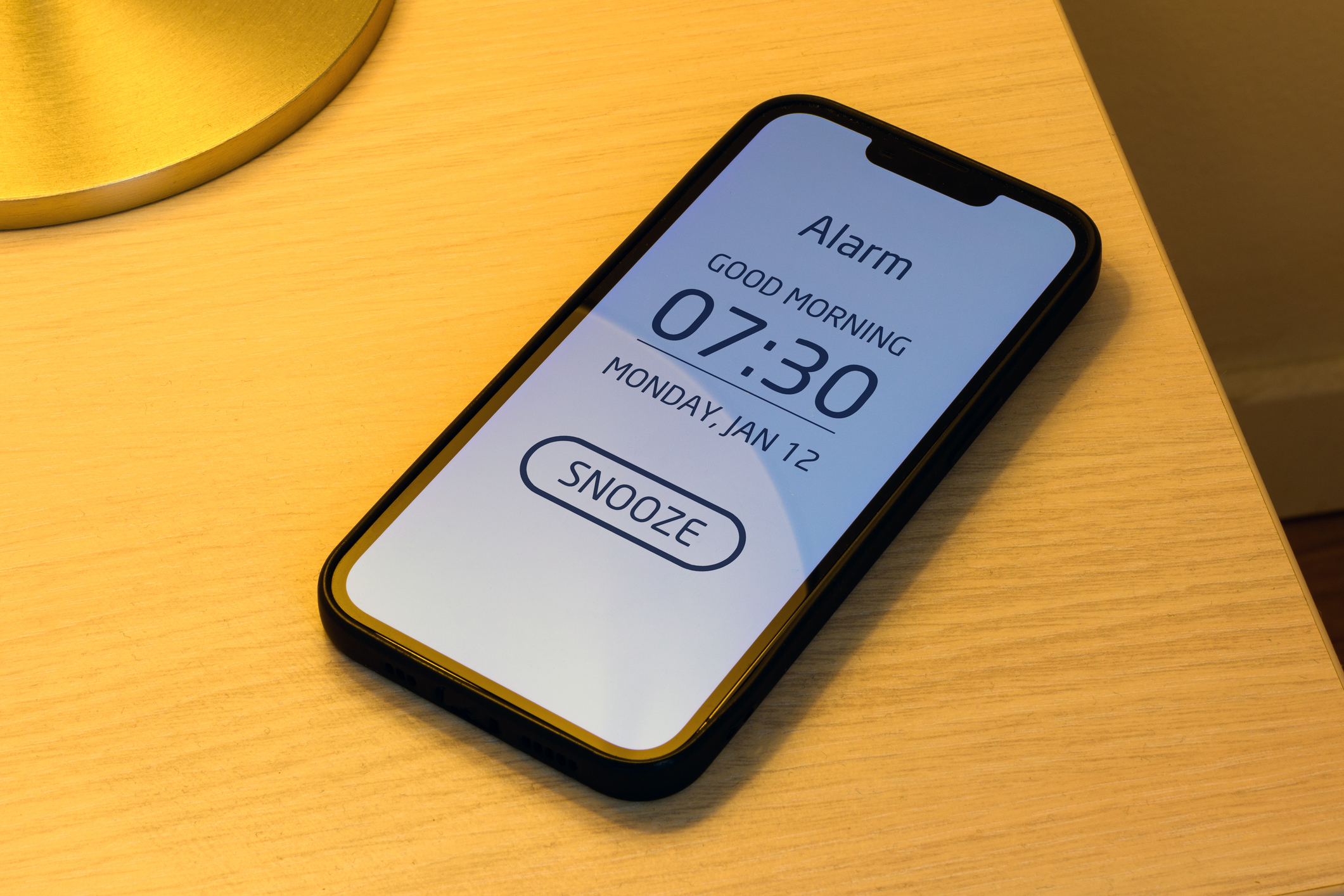
Hitting the Snooze Button May Not Be as Bad as You Think – Many sleep experts take a dim view of using the Snooze button in the morning. Setting serial alarms beginning earlier than you need to get up, rather than sleeping straight through until a single alarm, may prematurely pull you out of deep, restorative sleep, the thinking goes. And if you’re snoozing beyond the time you actually meant to get out of bed, that may be a signal that you’re not getting enough rest at night, says Philip Cheng, a sleep expert at Henry Ford Health.
But when Stephen Mattingly—a serial snoozer who completed his Ph.D. in cognition at the University of Notre Dame and then became a postdoctoral researcher at the university—turned to the scientific literature to see if the data backed up those warnings, he couldn’t find much.
Previous studies had found that fragmented sleep at night is worse than short but uninterrupted sleep, and, more positively, that napping may reverse some of the damage associated with sleep deprivation (and potentially also improve heart health). But neither nighttime slumber nor daytime napping is exactly the same as snoozing first thing in the morning.
Some of the only snoozing-specific research Mattingly could find linked snooze-button use to increased chances of lucid dreaming, but he was more interested in the day-to-day health effects of the habit. So he designed a study using both survey and wearable-device data to assess the science of snoozing.
The results, published in the journal Sleep in 2022, suggested that snoozers didn’t sleep less overall or report feeling more fatigued throughout the day than people who got up after one alarm. Snoozers did, however, tend to experience lighter sleep, especially in the hour before waking, and had elevated resting heart rates relative to non-snoozers—results that suggest their stress responses kicked into gear before waking.
That may sound like a bad thing, but the body has a stress system for a reason, Mattingly says. In this context, he says, it may help shake off “sleep inertia,” or the grogginess many people feel after waking, and promote alertness and cognitive function.
The study’s results suggest that snoozing has been “unfairly villainized,” says co-author Aaron Striegel, a professor of computer science at Notre Dame. “That was our big takeaway: it’s probably not as bad as what they’re telling you.”
A 2023 study published in the Journal of Sleep Research bears that out. The researchers found that, shortly after waking, people who had snoozed for 30 minutes performed better on arithmetic equations and memory exercises than people who got up after only one alarm—perhaps because they experienced less sleep inertia. There also weren’t dramatic differences in the cognition, mood, or sleepiness of snoozers and non-snoozers as the day went on.
However, the study was small. Only 30 people participated in the cognitive tests, and all of them—even those who were assigned to the group that woke after a single alarm—were snoozers in their day-to-day lives. Their cognition may have been worse since they altered their normal routines for the study, the authors write, so the results should be interpreted with caution.
Without a ton of data, Cheng says it’s hard to say for sure whether snoozing is beneficial for easing sleep inertia. But his gut feeling is that “it’s more functional for you to be out of bed and up and moving around” than it is to stay in bed, dozing. “You’re just delaying the time that you’re awake, as opposed to making an actual transition.” One 2022 study backs him up: it found that, although snoozers and non-snoozers don’t experience drastically different overall sleep quality, those who lean on the snooze button may have prolonged sleep inertia.
Kathryn Roecklein, who researches sleep at the University of Pittsburgh, agrees that snoozing likely isn’t the best way to reduce morning grogginess. Instead, she suggests turning on the lights as soon as your alarm goes off, which can make you feel more alert.
You can also buy alarm clocks with light features, some of which gradually brighten your room to mimic the sun’s rise. While there’s not a ton of research on specific products, the thinking behind them makes sense, since morning light exposure helps regulate circadian rhythms involved in sleep-wake cycles.
Snoozing may be particularly problematic for people who struggle to fall asleep at night, Roecklein says. For people in that camp, going to bed and rising at the same time every day can help sync circadian rhythms, she explains. Prolonged snoozing may throw off that process and make it harder to drift off at night.
But what about people who sleep fine at night, don’t feel overly tired during the day, and still like to snooze? Cheng says there’s probably not too much reason to worry. “It could just be behavioral,” he says. “There definitely is a possibility that it’s just part of normal daily life” for some people, perhaps because their schedules force them to get up earlier than is ideal for their biological clocks and hitting the snooze button helps them compensate.
Despite the popular perception that snoozers are lazy or harming their health, Mattingly says he’s not convinced that’s the case. Personally, he says, he kicked his snoozing habit for a reason that has nothing to do with rest: he had kids.









